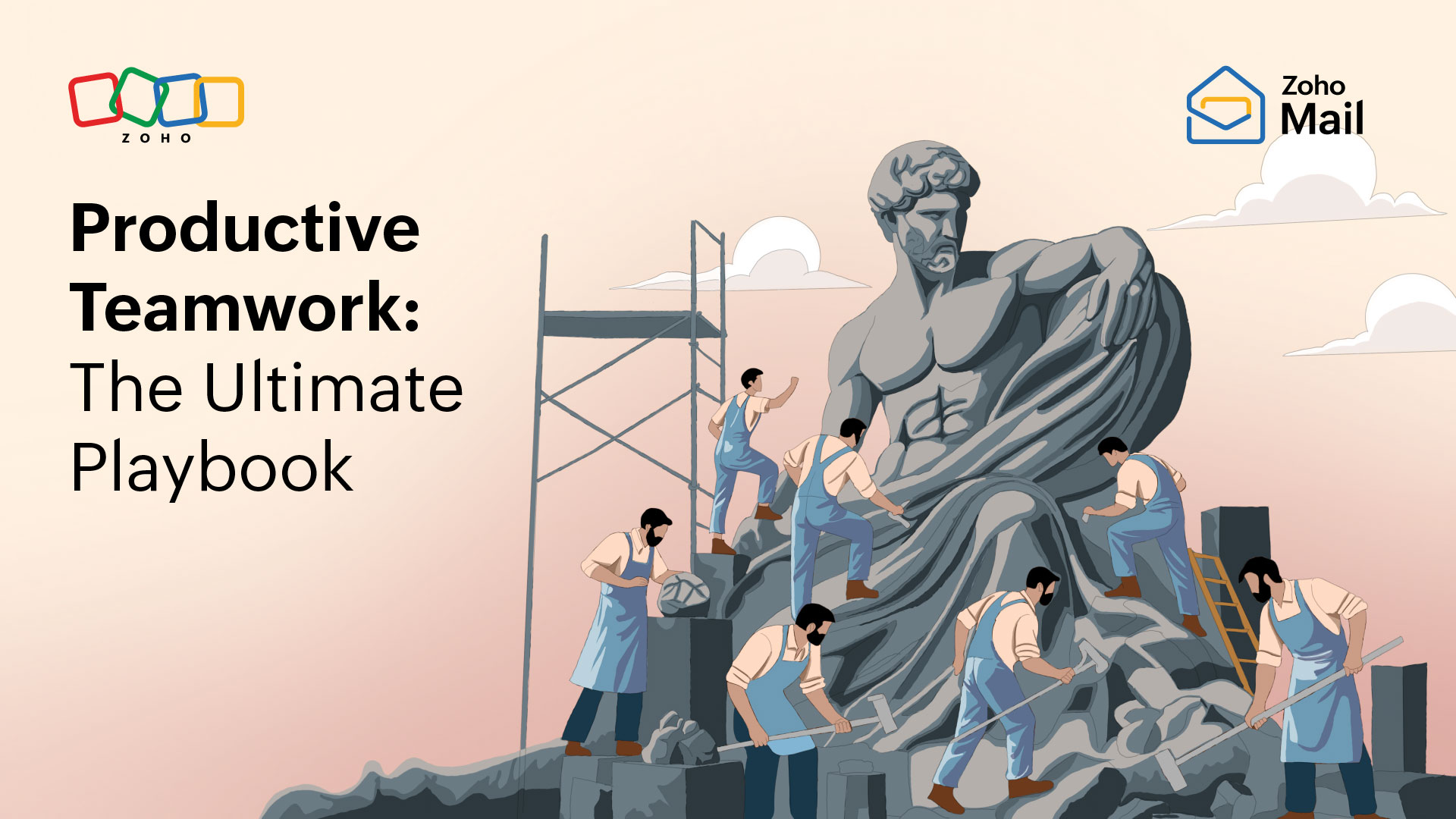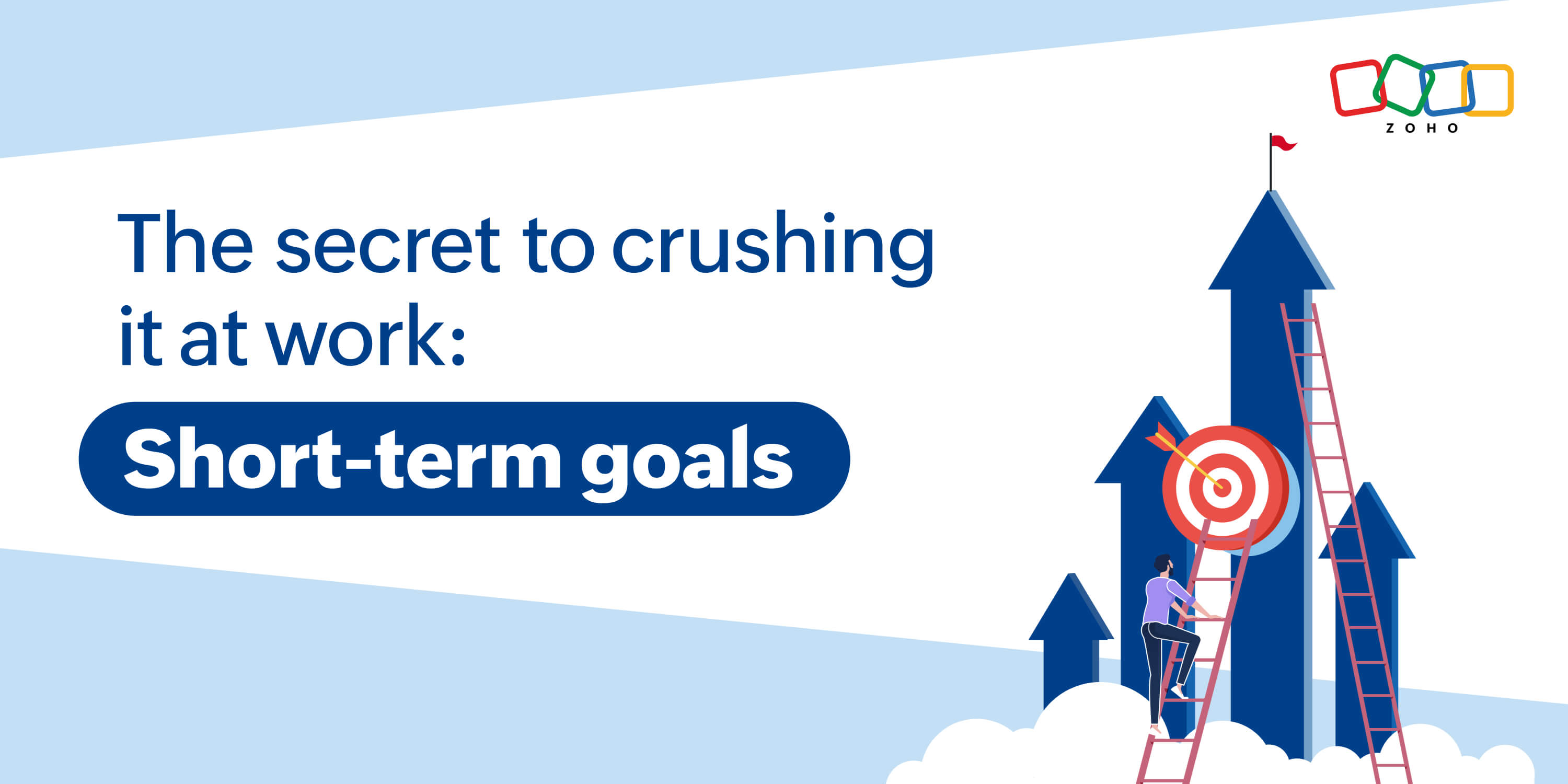- HOME
- All Topics
- Productivity in the workplace
- 5 strategies to achieve truly productive teamwork
5 strategies to achieve truly productive teamwork
- Published : April 14, 2025
- Last Updated : April 30, 2025
- 7 Views
- 7 Min Read
Think about your company goals. You know that, ultimately, it’s people who get your organization across those finish lines — and they do so by working together.
That means the better they’re able to work together, the more efficiently you can meet (and even exceed) your company’s targets.
So here’s the question that’s inevitably top of mind for nearly every business leader: How can you set your organization up for your most productive teamwork? This guide breaks down the strategies you need to know.

What exactly is productive teamwork?
Productive teamwork happens when a group of individuals (such as a project team or entire department) works together efficiently and effectively.
Of course, what counts as “productive” can be subjective. But, generally, productive teamwork is characterized by:
High output: The team gets a lot done in a reasonable amount of time.
Quality results: The team doesn’t just deliver a lot of work—they deliver a lot of top-notch work.
Collaborative environment: The team actively engages, communicates respectfully, encourages diverse perspectives, and fosters a culture where everybody’s contributions and opinions are valued.
Put simply, teamwork happens when you put people together and they find a way to achieve a shared goal. But productive teamwork happens when they find the best way to achieve that goal—with less time, less effort, and less conflict.
Why does productive teamwork matter?
Going from teamwork to productive teamwork requires strategy and effort—from both leaders and team members. But, before we get into recommended tactics to improve teamwork, let’s talk about why it’s worth the energy in the first place.
The gist is that more effective teamwork means a more effective organization. Why? Consistent, productive teamwork leads to:
Smoother collaborations: Employees spend an estimated 42% of their time working with other people. When they have the tools, support, and resources they need to do that well, they’re able to deliver work with less bumps, confusion, and frustration.
Higher productivity: With less chaos and disagreements, teams can deliver more work in a shorter amount of time. In fact, 93% of executives say their teams could deliver similar outcomes in half the time if they collaborated more effectively.
Better results: Teamwork isn’t working if people are delivering a lot of shoddy work. Fortunately, productive teamwork—and the positive work environment needed to cultivate it—supports teams in delivering high-quality work and more meaningful results.
Improved employee engagement: Teamwork has a direct impact on employee engagement. When people feel like a valuable part of a group, they’re more likely to feel committed to their work and motivated in their roles. That’s good news for your bottom line too. Higher levels of team engagement can lead to 21% higher profitability.
Higher morale: It’s hard for employees to feel happy at work when they struggle to work with their colleagues. In contrast, employees are 17% more satisfied with their jobs when they engage in productive, effective collaboration at work.
Stronger innovation: Productive teamwork means embracing diverse perspectives and opinions—and doing so has a direct and positive impact on innovation. Research shows that diverse teams generate more (and better) ideas and ultimately make smarter decisions about them.
Reduced burnout and stress: Worker burnout is an ongoing issue, but a strong support system at work can be a helpful antidote. In one study of workers in healthcare environments specifically, teamwork led to significantly less stress and burnout among physicians.
All of these benefits together can lead to greater productivity, profitability, and performance for your entire organization.
5 strategies for more productive teamwork
Here’s the thing: simply putting people in the same group doesn’t inherently lead to productive teamwork. Getting different people to work together effectively takes intention, strategy, and commitment.
So, how do you make that happen? Here are five strategies to help all of the different teams within your organization go from just working together to working together well.
1. Establish shared, motivating goals.
You can’t expect teams to work well together if they don’t know what they’re working toward. Every member of the team should understand the group’s objectives. Using the SMART goal framework will help you set goals that are:
Specific
Measurable
Achievable
Relevant
Time-bound
So, let’s say that you’re setting a goal for a marketing team. You want them to focus on increasing website traffic. With the SMART goal framework, your goal would look like this:
Increase website traffic by at least 25% by the end of Q2.
That gives the team a far more targeted objective, as well as a timeline and a quantifiable metric they can use to monitor and measure their progress.
While your team goals carry a lot of weight, they’re not enough to inspire productive teamwork. In addition to the group objective, people also need to understand:
How their individual contributions impact the team goal.
How each team goal contributes to the organization’s priorities.
It’s when team members have this sort of holistic perspective—from their own work all the way up to the company’s goals—that they’re able to work together effectively and make maximum impact.
2. Make roles and responsibilities clear.
You may think that workers know exactly what they’re supposed to do and how all of the puzzle pieces on the team fit together. But, alarmingly, Gallup found that only 47% of employees strongly agree they know what’s expected of them at work.
Once the team is aligned on a goal, they need to understand the role they play in working toward that objective. That includes breaking down:
Action items: What specific steps will people take? Sticking with the website traffic example, one person might focus on SEO content while another will work on a social media ad campaign.
Timelines: Clear due dates boost accountability and align the team on when their action items need to be completed.
Roles: Particularly in circumstances when the team needs to make decisions, they need clarity on who ultimately has decision-making power. A framework like DACI defines how each person can influence decisions on the team.
3. Find the right tools.
Particularly with the rise of remote and hybrid work arrangements, digital collaboration—via email, instant messaging, video conferencing, project management platforms, and more—is becoming more and more prevalent.
Yet, 59% of workers admit that they find online collaboration tools challenging. If you want people to work well together, it’s your responsibility to equip them with the tools they need to do so. Wondering how to find the right tools? Consider the following:
Your team’s needs: Where is your team struggling? Are there certain problem areas that keep coming up? Or bottlenecks that are slowing you down? Identifying your pain points will help you find tools that address them—rather than rolling out useless platforms that only add bloat to your workflows.
Your other apps and tools: What other tools does your team rely on? Can those tools be integrated with others in your tech stack? Or can you consolidate disparate tools into a single platform? One report found that 21% of employees say clicking between apps decreases their efficiency. So, the more cohesive tech experience you can provide, the better.
Your team’s feedback: Your tech tools should evolve alongside your team. Regularly solicit their feedback to understand what’s working, what isn’t, and what improvements you can make to optimize your workflows for better collaboration and higher productivity.
4. Improve team communication habits.
Team members are constantly bombarded with pings, notifications, and urgent requests—which can repeatedly rip their attention away from the meaningful, productive work they should be focused on.
An alarming 65% of knowledge workers say it’s more important to quickly respond to messages than it is to make progress on their top priorities.
Particularly if your team is distributed, you won’t do away with notifications entirely. However, you can work with your team members to set some ground rules and expectations related to communication and distractions. This can include things like:
Minimizing meetings or setting “no meeting” days that allow workers to focus on their work.
Establishing rules around which communication tools you’ll use, for what purpose, and your expected response times.
Creating systems that indicate when someone is in deep work mode and shouldn’t be interrupted (e.g., a specific status or away message).
All of these can take some of the pressure off your team members and give them more time and mental energy to focus on their actual work—rather than fending off relentless reminders and notifications.
5. Foster psychological safety.
Workers can’t collaborate effectively if they don’t feel safe and supported. That’s why psychological safety is so important, with 89% of employees saying it’s essential in the workplace.
When your team has a high degree of psychological safety, people feel free to voice concerns, share opinions, ask questions, offer feedback, and take risks without fear of judgment or punishment. This can take time to foster on your team, but you can do so by:
Listening to all feedback, questions, and concerns without being defensive or dismissive.
Viewing all mistakes or disappointments as learning opportunities.
Sharing your challenges or mistakes as a leader candidly with your team.
Encouraging team members to pursue big ideas and take risks.
Soliciting employee feedback frequently and taking regular steps to implement it.
All of these show employees that they have the full support of their manager and their team behind them—even if things don’t pan out the way they originally hoped. That increases transparency and vulnerability while simultaneously boosting trust, all of which can improve teamwork.
Taking your team from group work to great work
Productive teamwork doesn’t just happen. It takes intention, strategy, and ongoing effort.
When teams have clear goals, well-defined roles, the right tools, strong communication, and a solid foundation of trust, they don’t just work together—they work well together.
Ready to transform collaboration from a challenge to a competitive advantage in your organization? Get started with Zoho Workplace today.
 Kat Boogaard
Kat BoogaardKat is a freelance writer focused on the world of work. She writes for both employers and employees, and mainly covers topics related to the workplace such as productivity, entrepreneurship, and business success. Her byline has appeared in The New York Times, Fast Company, Business Insider, Forbes, and more.


